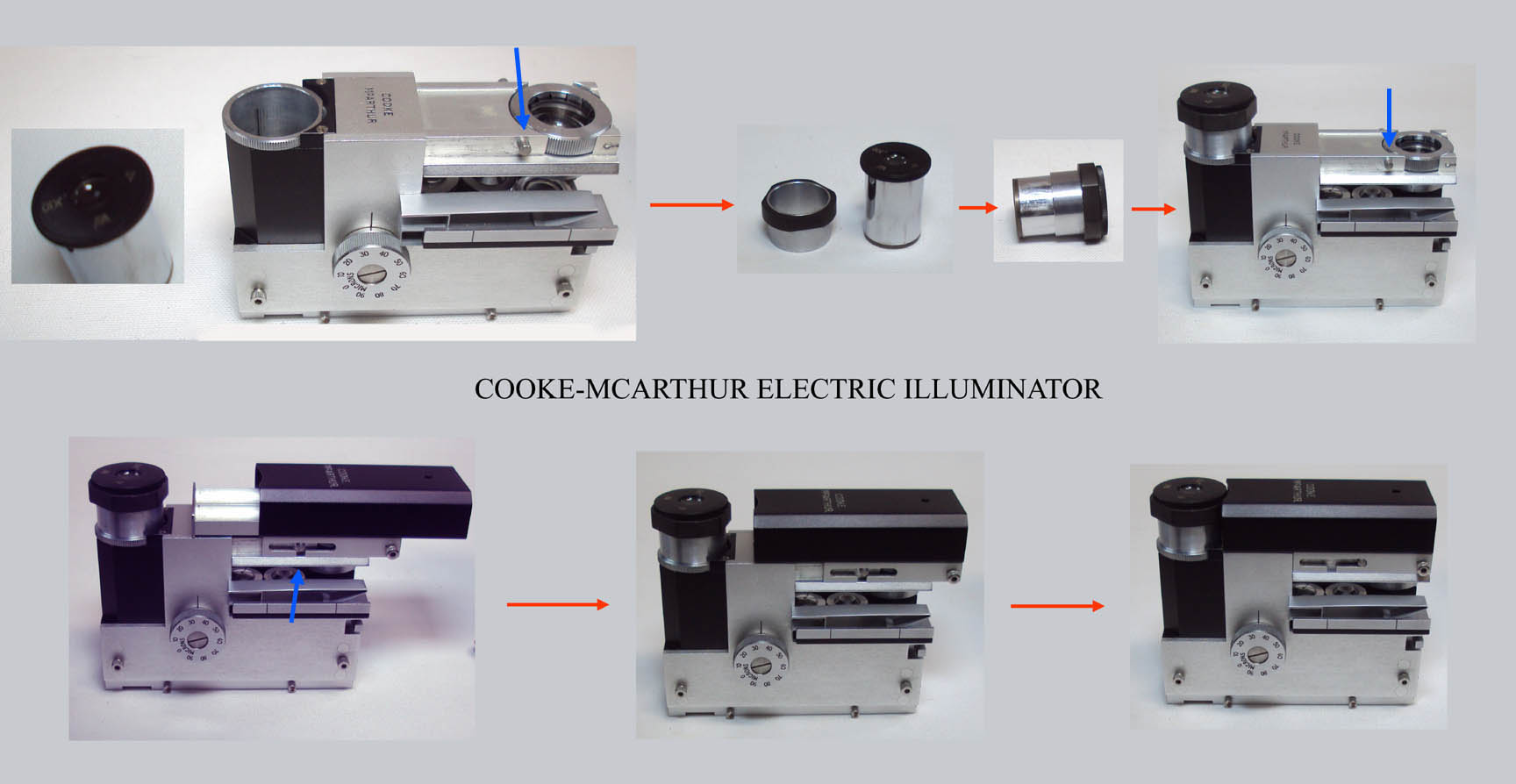MICROSCOPE-ANTIQUES.COM © 2013-15.
The illuminator contains a special replaceable 2.5 volt bulb. The original instructions suggest the use of only one battery for ordinary use and to conserve bulb life, but two batteries for brighter light such as for dark ground illumination or phase contrast work. Mercury batteries were originally supplied and recommended for routine use. A very thin diffuser screen was supplied (not present), to be slid into a very tiny dovetail groove on the outermost surface of the illuminator. The diffuser would be neccesary to fill the field for the lowest power objective, and occasionally with high power and brighter illumination to diffuse the image of the lamp filament. The screen was to be slid back when not in use, but was easily lost, and in the later Kirk model, was replaced by a type that could not be lost.
To install the illuminator, the mirror fitting is removed. Then the ocular is removed and the switch ring is placed around it. After returning the eyepiece to the microscope, the illuminator is placed down on the condenser arm so the pins fit through the opening in the illuminator housing (blue arrows).
The illuminator is then slid back towards the eyepiece and locked in place with a gripping screw.
The battery or batteries are installed (not shown), and the lid slides on from front to back. The 'rotating switch' around the eyepiece has an irregular shape, and so as it is turned the eccentric portion (made of nonconductive ebonite) pushes the batteries in the illuminator forward to close the circuit, turning on the bulb. The original black box for this accessory
is shown below.
For incident illumination, the illuminator is placed on the footplate, light facing upwards, and a beam-splitting optical prism tube is used instead of the standard one.





